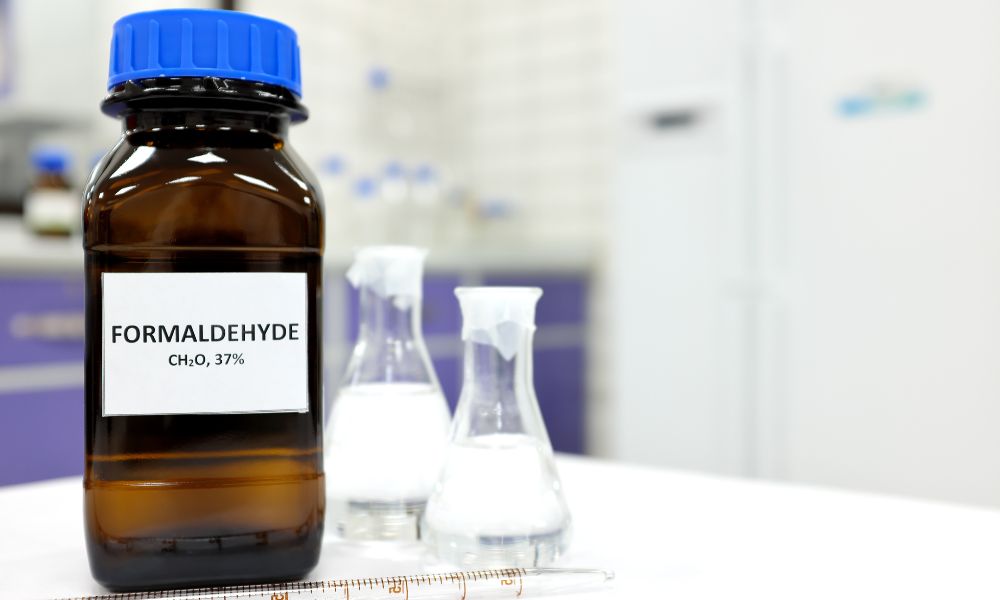Blog
What is the Formula for Formaldehyde? | Complete Guide
Formaldehyde is one of the simplest forms of aldehyde compounds. So, what is the formula for formaldehyde? The chemical formula for formaldehyde is CH₂O, which consists of two hydrogen atoms (H), one carbon atom (C), and one oxygen atom (O). This small, colorless gas has significant industrial uses, especially in manufacturing and biology.
In this article, we’ll dive deep into the formula for formaldehyde, explore its structure, uses, and safety concerns, and provide helpful insights about its role in various industries.
Understanding the Formula of Formaldehyde
To break down what is the formula for formaldehyde, let’s explore its composition:
- C stands for carbon: One carbon atom.
- H₂ represents two hydrogen atoms.
- O is for oxygen: One oxygen atom.
Thus, formaldehyde’s chemical formula is CH₂O. This is one of the simplest aldehydes and a fundamental building block in organic chemistry. Formaldehyde is formed through the oxidation of methanol, often in the presence of a catalyst.
Formaldehyde Formula: Key Structure, Applications
The Structural Formula of Formaldehyde
Apart from the basic molecular formula, what is the formula for formaldehyde when represented structurally? The structural formula for formaldehyde can be drawn as:
mathematicaCopy codeH – C = O
|
H
This structure shows that the carbon atom forms double bonds with the oxygen atom and single bonds with two hydrogen atoms. This simple structure makes formaldehyde highly reactive, allowing it to easily bond with other chemicals.
What is the Role of Formaldehyde in Chemistry?
Now that we’ve understood what is the formula for formaldehyde, let’s explore its importance in chemistry. Formaldehyde is widely used as a preservative, disinfectant, and in producing various materials such as plastics and resins. It plays a vital role in the following areas:
- Resin Production: Formaldehyde is a key component in making resins such as urea-formaldehyde and phenol-formaldehyde, which are used in construction and manufacturing.
- Preservatives: Due to its strong antibacterial properties, it’s often used in laboratories and medical settings to preserve biological specimens.
- Disinfection: Formaldehyde solutions are commonly used for disinfecting equipment and surfaces in medical environments.
What is the Formula for Formaldehyde in Biological Systems?
In biological systems, what is the formula for formaldehyde? It remains CH₂O, but its role extends into metabolism. In the human body, formaldehyde is produced as a byproduct of cellular processes and is quickly broken down into formic acid, which is less harmful.
Formaldehyde is also present in trace amounts in food and household products, though at safe levels. However, overexposure to formaldehyde can pose health risks, which we’ll cover later in the article.
Uses of Formaldehyde in Industry
What is the formula for formaldehyde used for in various industries? With its simple yet reactive structure, formaldehyde plays an essential role in multiple industrial applications. Some of the key uses include:
- Construction Materials: Formaldehyde-based resins are extensively used to produce plywood, particleboard, and fiberboard.
- Textiles: It’s used in textiles for wrinkle resistance and fabric finishes.
- Automotive Industry: Formaldehyde resins are used in the production of car parts, particularly in molded components.
- Cosmetics: In very small amounts, formaldehyde or formaldehyde-releasing agents are sometimes found in cosmetic products to prevent bacterial growth.
Safety Concerns Surrounding Formaldehyde
While what is the formula for formaldehyde may seem harmless, safety concerns regarding its use cannot be ignored. Formaldehyde is classified as a carcinogen in large amounts and can cause health problems if exposure levels are too high.
- Inhalation Risks: Breathing in high levels of formaldehyde can cause irritation in the eyes, nose, and throat. Prolonged exposure can lead to more severe respiratory issues and even increase the risk of certain cancers.
- Skin Contact: Skin exposure to formaldehyde can cause irritation and allergic reactions.
For these reasons, it’s crucial to follow safety protocols when handling formaldehyde in any industrial or laboratory setting.
Formaldehyde in Everyday Life
Though formaldehyde has some health risks, it is present in very small, safe quantities in many household products. Items such as paints, adhesives, and pressed-wood products often contain small amounts of formaldehyde. Manufacturers have significantly reduced the levels of formaldehyde in consumer products to comply with safety regulations.
Conclusion: What is the Formula for Formaldehyde?
So, what is the formula for formaldehyde? The chemical formula is CH₂O, a simple yet incredibly versatile compound used in various industries, from manufacturing to biology. Despite its simplicity, formaldehyde plays a vital role in the production of materials like resins, disinfectants, and preservatives. However, it’s important to handle formaldehyde carefully to avoid health risks associated with overexposure.
Follow us on Facebook!

